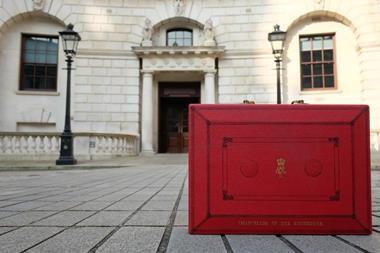Inside Track by Peter Martin
If there's one cast-iron prediction for 2006, it is that the investment community will continue to pump large quantities of cash into the pub and restaurant sector.
The past 12 months have been a bumper time for deals, with buy-outs, IPOs, even the odd trade sale, and there's no evidence to suggest the coming year will be any different. In fact, it's hard to recollect a time in the last five or even 10 years when the pickings have been poor for dealmakers in this market.
But has all the investment been beneficial? Continual merger and acquisition activity has turned the pub industry on its head, but to what end? Is the consumer any better off, apart perhaps for cheaper prices?
Where's the creativity, the new ideas and concepts? The days when Wetherpoons, Yates's, Slug & Lettuce and Pitcher & Piano were young and exciting seem a long time off, and there's been precious little to grab the imagination since then.
If anything, there's a compelling argument to say that despite all the re-engineering, or perhaps even because of it, pubs are slowly but steadily falling out of public favour. Drinking out of the home is in decline, and has been for some time, while sales of alcohol for home consumption continue to rise.
Spirit Group has been one of the major players in the deal world. Little more than two years ago it swallowed up Scottish & Newcastle Retail in a massive £2.51bn acquisition, only to be sold itself after a string of disposals for £2.7bn just a couple of weeks ago.
Apart from making a lot of people a lot of money, what did Spirit achieve? What was it for? What will be the Spirit legacy? Two For One? “Value” pricing and a handful of interesting gastro pubs?
Its systematic, and retail inspired, approach to procurement and menu development was certainly innovative, but it is not clear whether the rest of the market will be following its lead.
It's sad to say, but in five years time will there be anything left of what was for a while the country's biggest managed house group to remember it by?
Ironically, the operator that has consistently avoided doing deals has emerged as the most creative and operationally pioneering of the big players. Mitchells & Butlers, the spin-off from “boring old” Bass, has fanned the flames of Ember Inns, reinvented Toby and nurtured the creation of Project S, aka Project Orange, as a blueprint for the evolution of the pub restaurant.
Also in contrast to most of the pub sector, the chain restaurant market has in general missed out on the really 'big buck' deals. It has also experienced steady and consistent growth and the flourishing of new brands and concepts.
It would be ludicrous, of course, to suggest that the likes of Wagamama, Caffe Nero, Loch Fyne, La Tasca, Carluccio's, Strada and Chez Gerard haven't all grown from fledgling concepts into becoming the new eating-out establishment without the help of outside investment. Obviously, they have, but their backers, by the nature of the scale and stage of development of the businesses, have tended to be either individual investors or smaller venture capital houses focused on supporting the idea and the creativity, enthusiasm and leadership within the management teams.
There is a sense that over in the pub world asset values and the finer points of financial engineering are much more to the front of investors' minds.
The concern must be that with the new-found profile and rating of restaurant groups, and the larger scale investment they are already attracting, their entrepreneurial flair and innovation could become submerged beneath the need to “do deals”.
The preoccupation within some parts of the investment community with market consolidation doesn't help. There is much to be said for growing businesses by concentrating on building strong concepts and brands, and fostering internal environments that can stimulate, and cope with, new concept development.
The lesson not just from the pub sector, but also recent restaurant market history, is that when organisations start getting big, things start to go wrong. Managing organic corporate growth is tricky enough, handling post-merger integration is on a different scale again, and is perhaps the biggest challenge facing any business. All deals should perhaps carry that corporate health warning.
The money won't dry up in 2006, but where it goes and how it is used should be an issue. For the long-term health of the sector, and its attractiveness to the consuming public, we need it to stimulate new ideas and the people with those ideas.











































